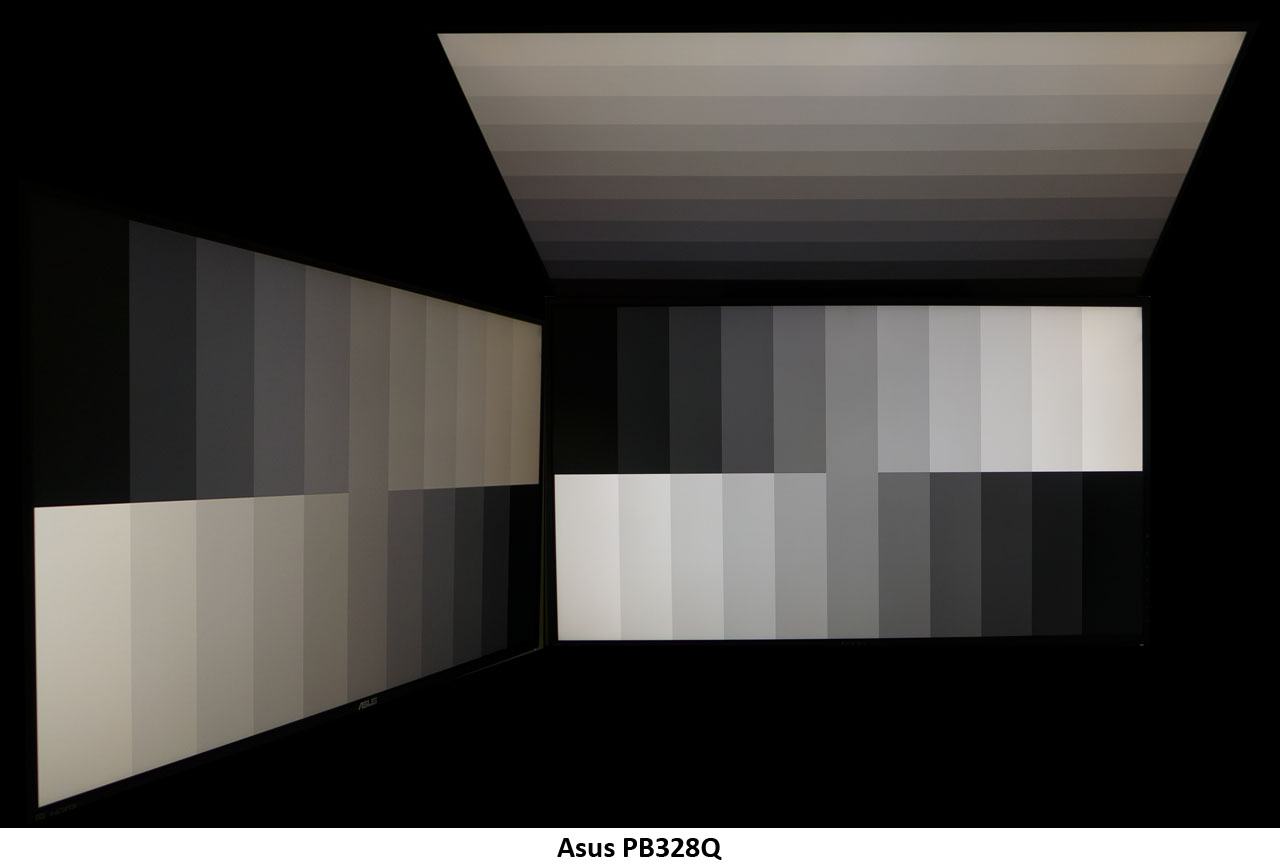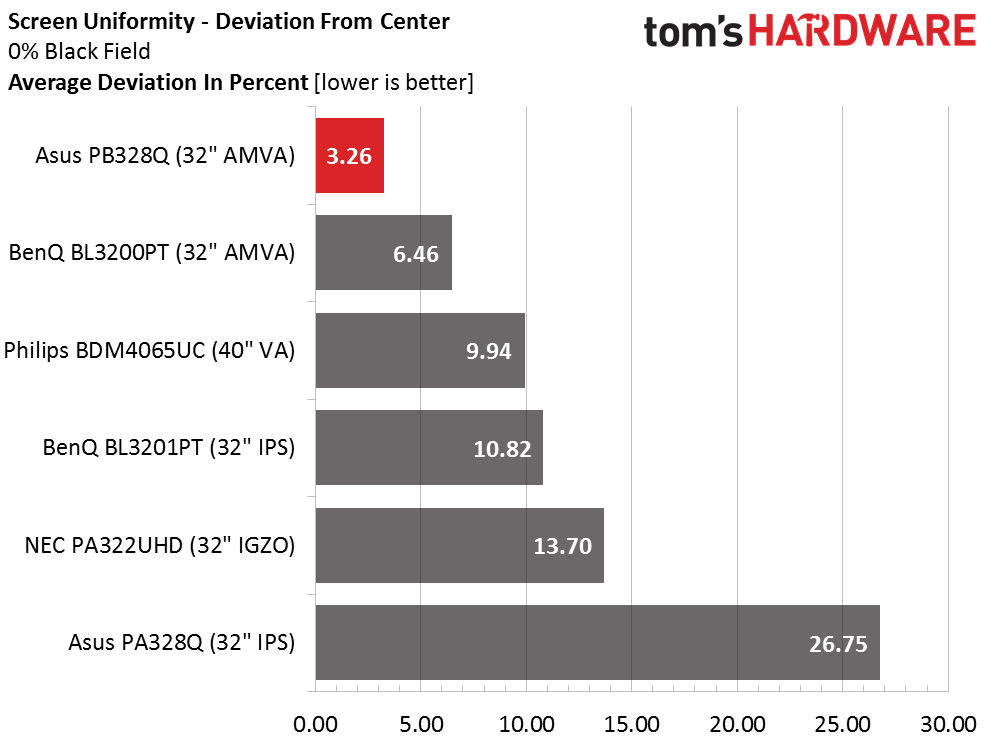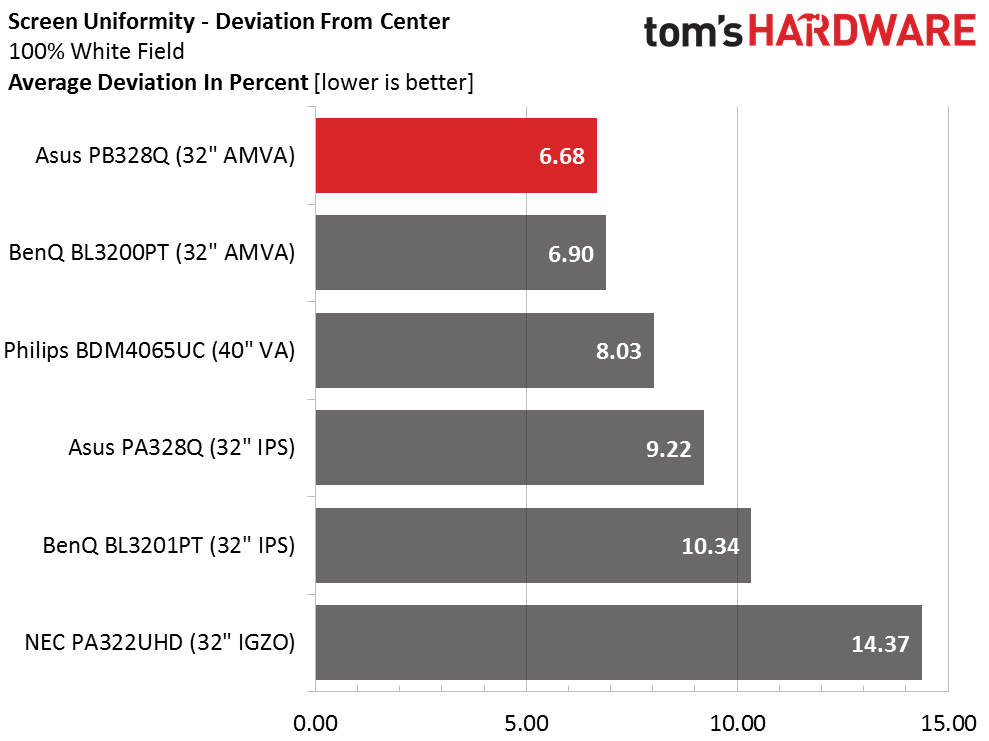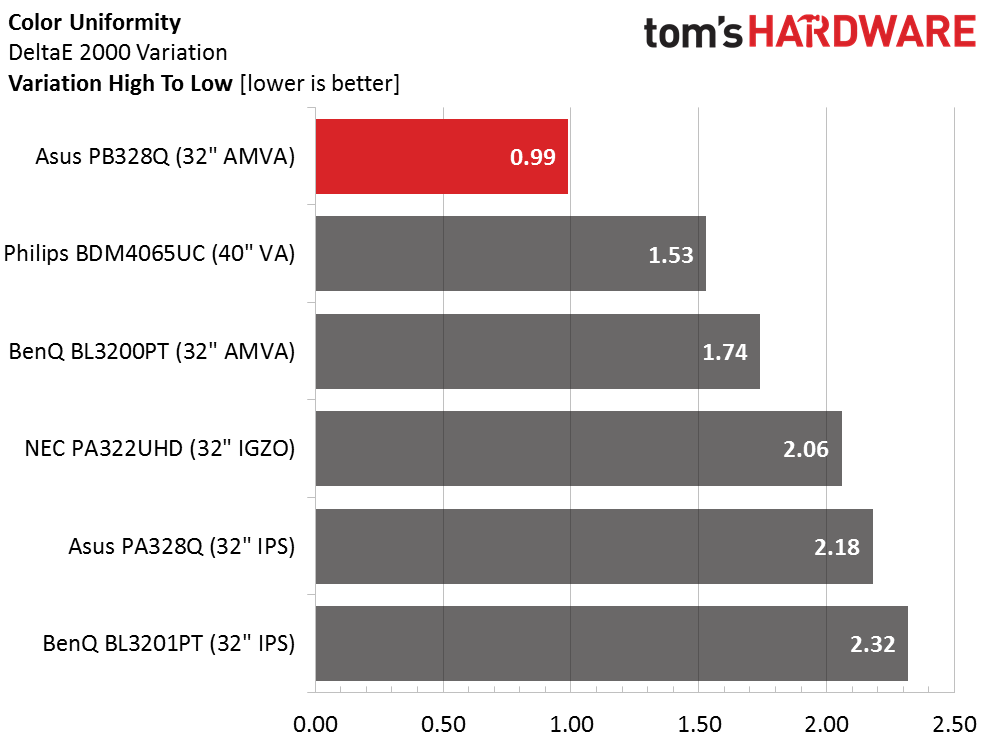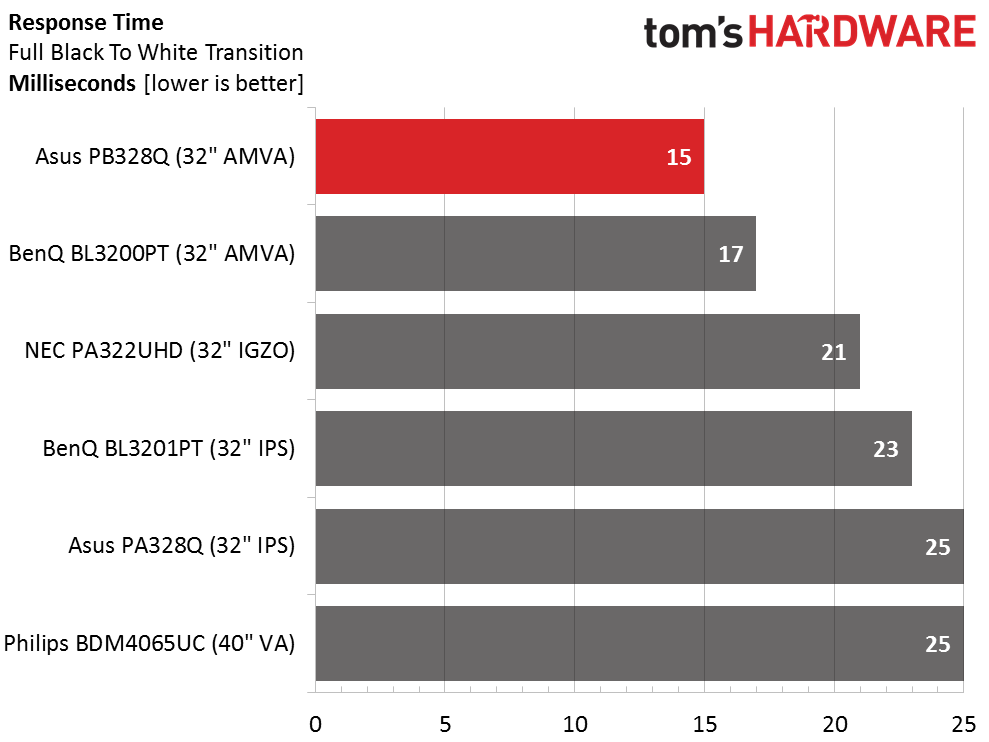Asus PB328Q 32-inch AMVA QHD Monitor Review
Today we're evaluating one of the most accurate and best-performing monitors we've tested: the 32-inch AMVA QHD Asus PB328Q. Let's see how it compares to the tough competition.
Why you can trust Tom's Hardware
Viewing Angles, Uniformity, Response And Lag
To learn how we measure screen uniformity, please click here.
The one place where IPS and AHVA still rules is off-axis image fidelity. AMVA provides fantastic contrast but at a small price. From the side you can see about 50 percent less light and a red tint. Detail is well-preserved compared to TN where the darker steps will crush together. The story is pretty much the same from the top-down view. Detail remains solid but the image becomes darker and warmer. From a normal viewing position at a 24 to 36-inch distance however, this monitor has few equals.
Screen Uniformity: Luminance
3.26 percent is a result we'd expect to see from a uniformity-compensated display. The PB328Q does not have that feature and obviously doesn't need it. This is the best uncorrected number we've ever recorded in the black-field test. There is no light bleed or even the suggestion of a hotspot; just a perfect black tone from edge to edge. And no surprise, it's followed closely by the BL3200PT.
Here's the white field measurement.
The white field result is also among the best we've seen from any monitor at any price. And with the BenQ closely in second place it's easy to conclude that this is one of the best panel parts you can get in a 32-inch QHD format. It just doesn't get much better than this.
Screen Uniformity: Color
We've only had a few sample monitors that could break one Delta E in the color uniformity test. None of the screens here have any visible problems but our i1 Pro is more discerning. With only two tests to go it looks like there truly is nothing wrong with the PB328Q. Its performance is beyond reproach.
Pixel Response And Input Lag
Please click here to read up on our pixel response and input lag testing procedures.
Get Tom's Hardware's best news and in-depth reviews, straight to your inbox.
Asus has plenty of high-performance gaming monitors in its product line and a few of them cost more than the PB328Q. A 144Hz screen will certainly give you faster response but the 75Hz max refresh of the PB means it will beat all our 60Hz contenders. With the BL3200PT only two milliseconds behind it's logical to say that VA has a speed advantage over IPS. But the Philips can't quite make it into the top three here.
Here are the lag results.
This might be the ideal jumbo monitor for gamers. This kind of input lag is only slightly behind that of a 144Hz display. Only pro-gamers are likely to notice a difference. The rest of us will be more than happy to frag away on the PB328Q. Low motion blur and quick response to control inputs are the order of the day and gaming on this thing is a total blast.
Current page: Viewing Angles, Uniformity, Response And Lag
Prev Page Color Gamut And Performance Next Page Conclusion
Christian Eberle is a Contributing Editor for Tom's Hardware US. He's a veteran reviewer of A/V equipment, specializing in monitors. Christian began his obsession with tech when he built his first PC in 1991, a 286 running DOS 3.0 at a blazing 12MHz. In 2006, he undertook training from the Imaging Science Foundation in video calibration and testing and thus started a passion for precise imaging that persists to this day. He is also a professional musician with a degree from the New England Conservatory as a classical bassoonist which he used to good effect as a performer with the West Point Army Band from 1987 to 2013. He enjoys watching movies and listening to high-end audio in his custom-built home theater and can be seen riding trails near his home on a race-ready ICE VTX recumbent trike. Christian enjoys the endless summer in Florida where he lives with his wife and Chihuahua and plays with orchestras around the state.
